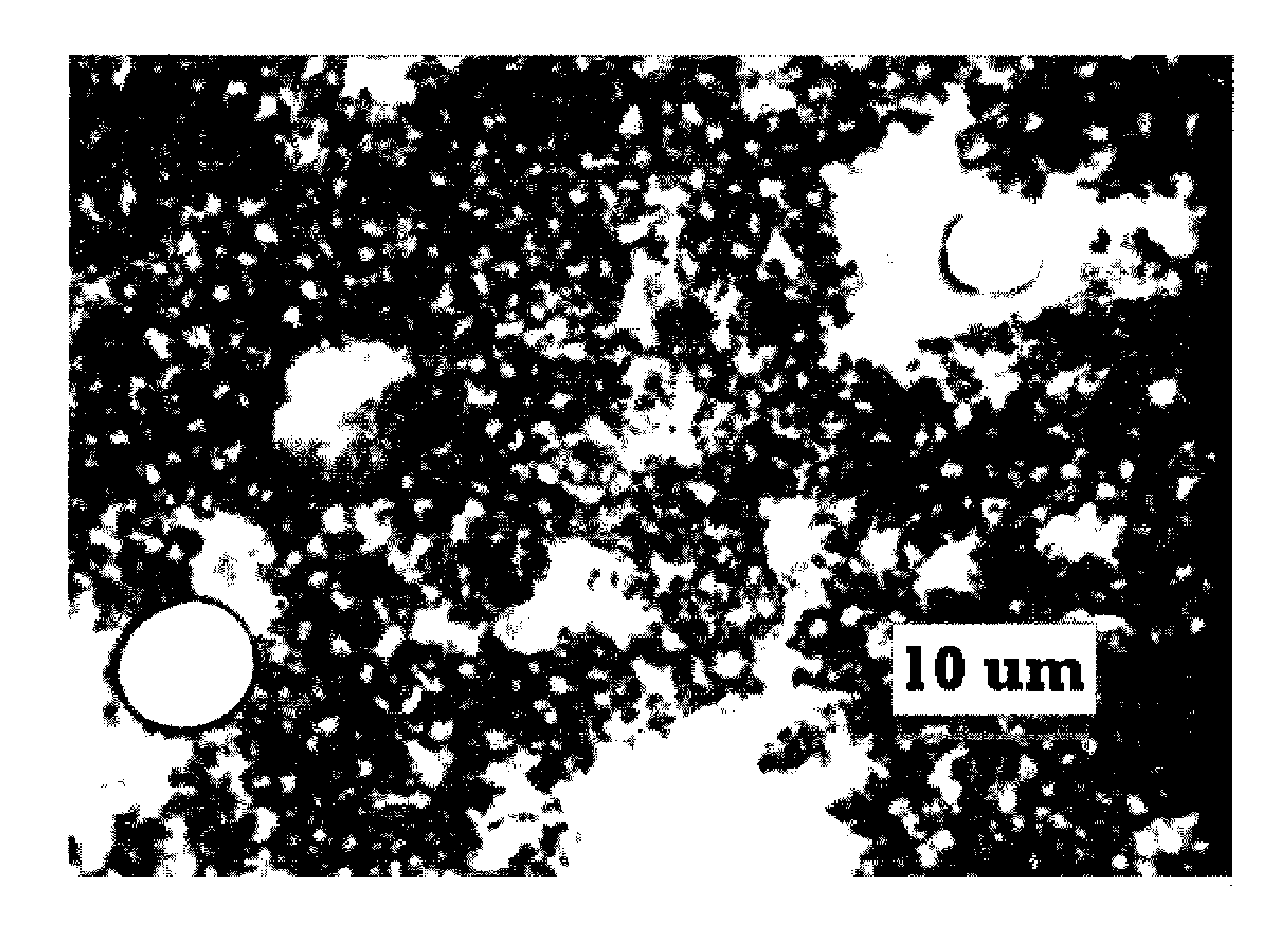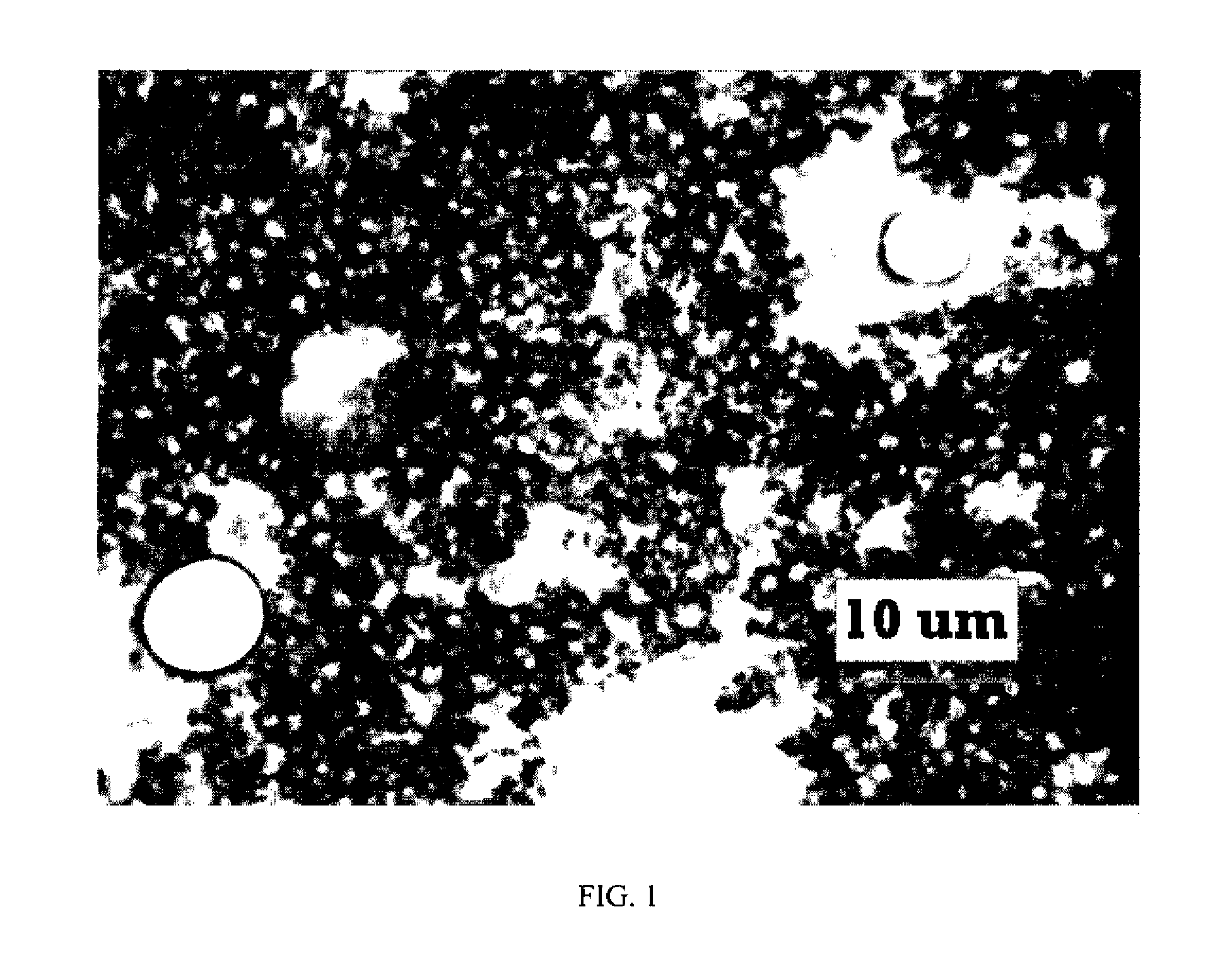Method of manufacturing wax-containing polymer particles
a technology of polymer particles and manufacturing methods, applied in the direction of instruments, optics, developers, etc., can solve the problems of low molecular weight, low melt elasticity, and brittleness of binding polymers
- Summary
- Abstract
- Description
- Claims
- Application Information
AI Technical Summary
Benefits of technology
Problems solved by technology
Method used
Image
Examples
examples
Materials
[0081]The wax used in the examples was the ester wax WE-3® from NOF Corporation. The wax dispersants used in the examples are given in Table 1.
[0082]The binder used for making toners containing the wax by the methods of this invention was Kao E, a Bisphenol-A based polyester polymer obtained from Kao Specialties Americas LLC, a part of Kao Corporation, Japan. The cyan pigment used in the present invention is Pigment Blue 15:3 from Sun Chemical, either as a master batch at 40 weight percent in a polyester binder made of fumaric acid and Bisphenol A, or as a dispersion in ethyl acetate prepared by milling in the presence of Solsperse 32000 (25 weight percent with respect to pigment) and Solsperse 12000 (6 weight percent with respect to pigment), both from Lubrizol Advanced Materials, Inc. Solsperse 32000 is a polyester-polyamide resin and Solsperse 12000 is a pigmentary synergist agent. Tuftec P2000, a partially (selectively) hydrogenated polystyrene-butadiene thermoplastic e...
example i-11
Inventive Example I-11
Cyan Toner Prepared with Wax-1 Dispersion According to Method A
[0101]In comparing the Comparative with Inventive Examples, complete incorporation of the WE-3 wax into the final toner particles can be ascertained from the DSC data. Charging and fusing of the toner are affected by the aqueous wax dispersants (Examples I-1 to I-3), and incorporation of charge control agent leads to improved and stable charge for the toners of Inventive Examples. Incorporation of oil phase dispersing aids in Examples I-4 through I-10 shows improved fusing performance by the Inventive samples. Therefore, samples prepared from aqueous wax dispersions can give superb charging, fusing, and covering power performances
TABLE 4Inventive Examples DSC and Particle Size DataVolVolWaxAddendaDSCMedianMed / PigmentDisper-(oilΔHmDiam-NumExampleSourcesionphase)(J / g))eter, μMedI-4 (Inven-P-1WAX-21.5% CCA14.045.761.079tion)I-5 (Inven-P-1WAX-21.5% CCA14.525.891.078tion)1.2% D-4I-6 (Inven-P-1WAX-21.5% C...
##ventive example 12
Inventive Example 12
[0103]Cyan toner according to Method B, where both WAX-2 and P-4 were included in the water phase that contained the Nalco 1060 stabilizer. The resulting toner contained 4.69% PB15:3, 8% WE-3, and 1.5% CCA (FCA-2508N) all based on the total weight of the toner. The particles were found to have a volume median diameter of 6.36μ, with excellent size distribution. And both the pigment and wax are found in the solid toner particles.
[0104]The following examples use aqueous dispersions of wax in the second aqueous phase to prepare porous toner particles.
PUM
| Property | Measurement | Unit |
|---|---|---|
| particle size | aaaaa | aaaaa |
| particle size | aaaaa | aaaaa |
| porosity | aaaaa | aaaaa |
Abstract
Description
Claims
Application Information
 Login to View More
Login to View More - R&D
- Intellectual Property
- Life Sciences
- Materials
- Tech Scout
- Unparalleled Data Quality
- Higher Quality Content
- 60% Fewer Hallucinations
Browse by: Latest US Patents, China's latest patents, Technical Efficacy Thesaurus, Application Domain, Technology Topic, Popular Technical Reports.
© 2025 PatSnap. All rights reserved.Legal|Privacy policy|Modern Slavery Act Transparency Statement|Sitemap|About US| Contact US: help@patsnap.com


